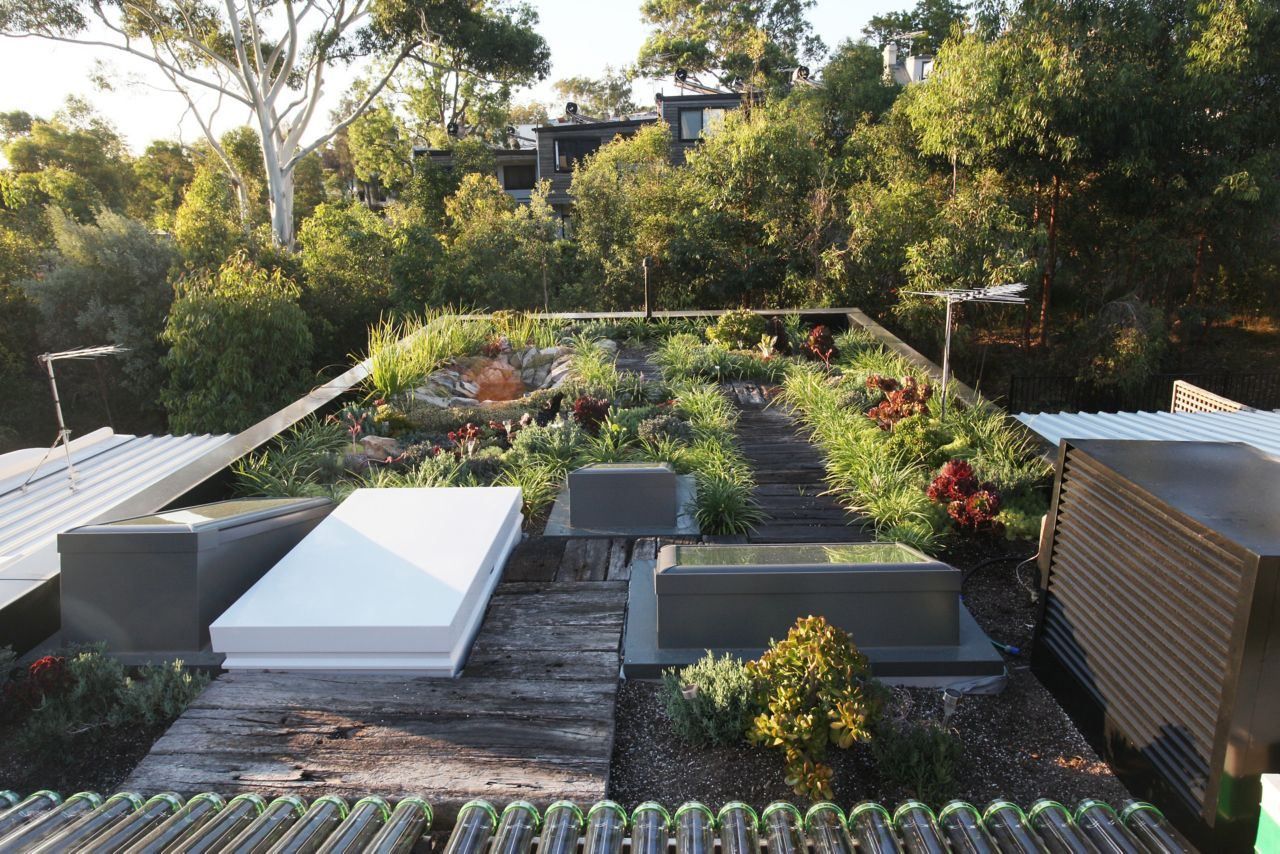In the so called "Green Roofs" a suitable plant growing medium or soil is built
up, and planted with selected vegetation over the water proofing membrane. Green
roofs can therefore make a significant contribution and present practical solutions
in the quest for sustainability, increased biodiversity and quality of life.
Green roofs can make a significant contribution and present practical solutions in the quest for sustainability increased biodiversity and quality of life. Also called vegetated roofs, eco-roofs, or garden roofs, a green roof is simply a planted area on a flat or sloped roof. You can grow everything from low grasses, herbs, and sedums to trees and shrubs, depending on the type of green roof.
Advantages of Green Roofs
- Visually more appealing and provides a park-like ambiance on your rooftop
- Can contribute to your sustainable building certification rating
- Slows down storm water flow by retaining up to 75% of rainwater, thus alleviating the pressure on storm water and drainage infrastructure
- Reduces the urban heat island effect
- Improves air quality with increased green space which filters air
- Reduces building’s cooling energy consumption and costs particularly in warmer months due to thermal mass effect of the green roof
- Extends lifespan of the waterproofing membrane by protecting it from damaging UV rays and freeze-thaw cycles
- Increases your property value by providing a valuable building asset


